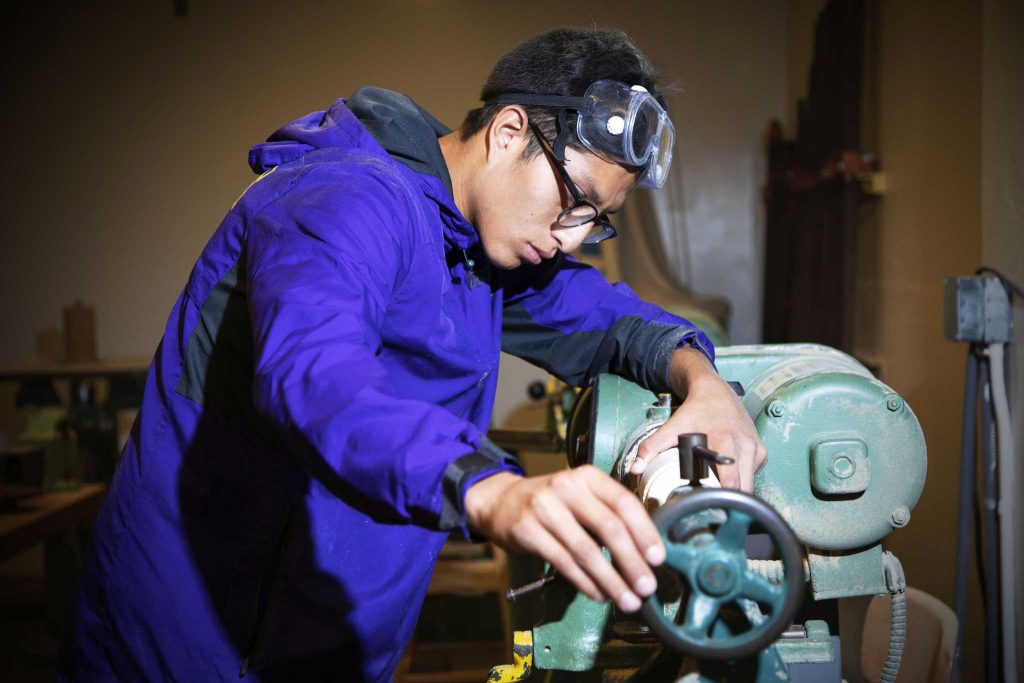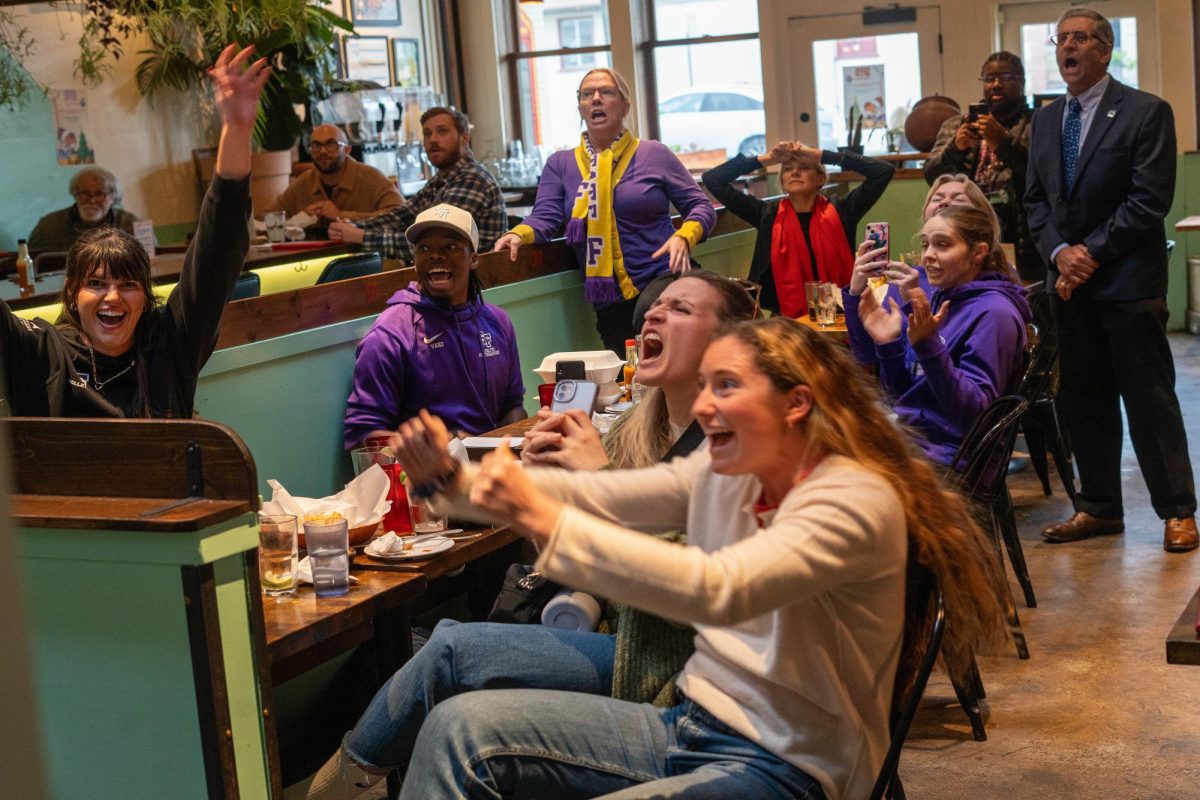SF State cross country runner Kenny Trejo has had a successful career as a Gator, but as his final season of cross country comes to a close, he is focusing on his ultimate goal of finishing his major in industrial design.
Although Trejo’s major and athletic ability may seem to be separate entities, he plans to fuse his passion for both running and design into a career developing sneakers and products for runners and athletes.
“I want to expand my running knowledge to greater development of product knowledge,” Trejo said.
This past summer, Trejo fell into an opportunity that would bring him one step closer to bringing his dreams to fruition when he met Carlos Montesinos through a family friend.
Montesinos, a product development manager at Intel, was looking for candidates for a professional development group he was creating specifically for Latino students and professionals looking to break into the product development and technology industry.
“Cracking into these industries, especially in the tech industry, is hard for us,” Montesinos said. “When I moved to the U.S. I realized that this was specifically a problem for Latinos and minorities in general.”
Originally from Ecuador, Montesinos moved to the U.S. 12 years ago to complete his masters in electrical and computer engineering. Though Montesinos eventually established himself at Intel in Santa Clara, he found the task of looking for jobs and internships in his field daunting, so he decided to create his own opportunities.
“Most of my jobs, including all the internships I’ve done, I’ve created myself ,” Montesinos said.
His entrepreneurial drive influenced his idea to devise a program dedicated to preparing Latinos to enter the industry with experience and hands-on knowledge.
“If we don’t help each other, no one is going to help us,” Montesinos said.
Montesinos first began to tackle this problem while vice president of the Intel Latino Network from 2013 to 2014 when he led a similar program at San Jose State University. Unlike the program he ran through Intel where he had a wide network of support, Montesinos is now running his new program on his own free time, recruiting members by word of mouth.
This is precisely how Montesinos found Trejo who has been part of the small group of four students and four advising professionals since its inception this past summer.
“Currently we are keeping it small and tight because we want to figure out the process and how it works,” Montesinos said. “Once we have a couple of projects done and we know how to operate as a group, then we would like to start scaling and making it bigger.”
“A lot of the time, because we are very low in the minority of college graduates, and even more so in product design, he wanted to make sure there was an open space and a creative space for us to build,” Trejo said.
Although the number of Latino students attending college is on the rise, statistics from the Pew Research Center show they still fall behind in graduation rates, with only 15 percent earning a bachelor’s degree or higher in 2014. More specifically, 2014 statistics from the U.S Dept. of Education show there were only 25 graduates of SF State’s industrial design program and out of those students, only one was Latino.
Trejo is not only a first-generation college student, but is also one of the few Latino students in the extremely small department of industrial design at SF State, where he is learning to combine technology and product design.
An article from the New York Times recently addressed this issue, stating that Latinos are underrepresented in the tech industry, with only 12 percent going into tech jobs after graduating from college, compared to 40 percent of Asian graduates and 19 percent White.
Montesinos attributes this problem to what he calls a “chicken and egg” debacle.
“Highly qualified students are looking for jobs, but they don’t get the job because they haven’t had the experience,” Montesinos said. “On the other hand they haven’t had the experience because no one has ever given them the opportunity to do the job.”
Montesinos saw many of the students he worked with at San Jose State encounter this problem and created the group as a solution.
The group holds meetings through Google Hangouts every Tuesday, where they discuss product ideas and begin to go over designs and then progress through the weeks to different phases of product development. Each member works on a specific task for a certain amount of time during the week based on their skill set, then comes back with their progress in the meeting the next week. Once a month, the group meets at Montesinos’ house for what he calls a “barbeque-a-thon” where the group starts to physically assemble the product.
Montesinos considers his program to be much more than an internship and therefore is averse to calling it such.
“It goes beyond an internship because we are building the network, we are building the experience, we are building a portfolio of results and using that to help each other go to the next level in our careers,” Montesinos said.
Trejo said not only has Montesinos’ program given him tangible work experience to add to his portfolio, but has created a stronger sense of a Latino community working to push themselves into the industry.
“As a team we’re bonding and becoming friends,” Montesinos said. “Once this group dissolves and people start moving to the next step of their careers, at some point they are going to need help, or they are going to need a job or they are going to have an opening and they are going to remember these people in this group.”
Montesinos said the long-term goal is to implement his program in schools throughout the U.S., creating a larger representation of Latinos in the industry and stronger sense of community support.
“I would like to literally inject this process into many schools and many communities and see how big we can grow,” Montesinos said. “In my mind, my ultimate goal would be to see us becoming a group in the thousands”
Montesinos knows his goals are ambitious, but said the he hopes to create a greater impact on the Latino community and its value in the workforce. He hopes to see an increase in the number of Latinos holding higher positions in industry, an occurrence he hopes will narrow the wage gap between Latinos and other groups, shown in the 2013 U.S Bureau of Labor Statics.
“I want to see more Latinos in leadership positions in the industry,” Montesinos said. “I want to see Latinos as Vice Presidents and CEOs of companies.”
Trejo is confident that this program will help him achieve his goals by giving him a competitive edge. Though he knows the journey will be difficult, he said he feels prepared to take this experience into the workforce.
“Being as diverse as we are here in the Bay Area and with all the start-up companies in the industry, you have to hustle,” Trejo said.







